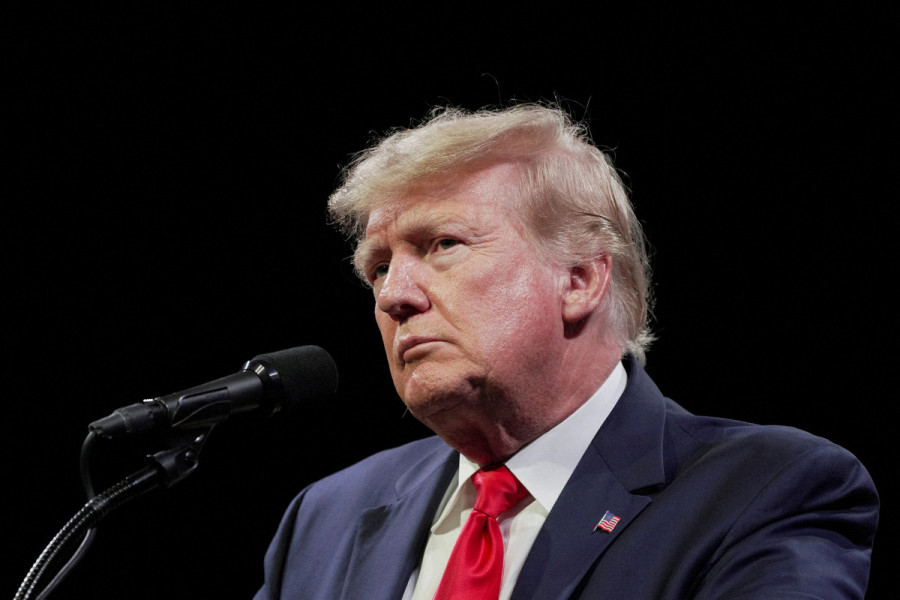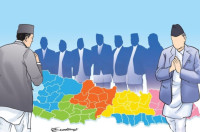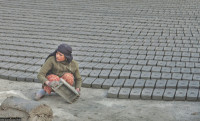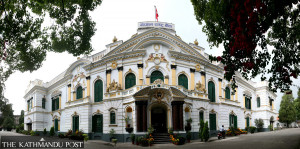Columns
Disruption dividends
Trump’s second term offers renewed opportunities for smaller nations to strengthen relations with the US.
John Narayan Parajuli
‘Shock and awe’ perhaps best describe the global reaction to President Donald J. Trump assuming office for a non-consecutive second term last week. Leaders, supporters, investors and celebrities from both the United States and abroad have been flocking to the Mar-a-Lago for weeks to pay homage to the new American leader, evoking imagery of an emperor’s court.
Trump’s return promises a new era of social, economic and geopolitical disruption—one poised to reshape not only the US but also the liberal international order, already under siege from populist leaders worldwide. Not only Trump’s opponents at home and abroad but even Washington’s closest allies are watching with bated breath as he signals an appetite for economic and even military coercion to implement his vision for America and the world.
In Canada, America’s closest ally both strategically and geographically, leaders are bracing for major economic turmoil from Trump’s sweeping 25 percent tariff threats. It is unclear how much of Trump’s threat is posturing, but one thing is clear: He is an equal opportunity offender both for friends and foes—and that reputation of being an unpredictable ‘madman’ is being credited for pushing Israel and Hamas to a ceasefire deal on January 19.
Nepal and the US
For a country like Nepal, thousands of kilometres away and often overshadowed in US foreign policy priorities, Trump’s first presidency brought surprising attention.
From the first high-level meetings between Nepal and the US after a 16-year hiatus to the signing of a $500 million Millennium Challenge Corporation (MCC) compact and two visits by admirals overseeing the US Indo-Pacific Command, the engagements were substantive. For a self-styled deal-making president, Trump’s unconventional approach to foreign policy was equal parts troublesome and refreshing. While America’s allies were on edge due to his willingness to forego decades of established diplomatic conventions and consensus, others found this disruptive approach beneficial.
Contrary to initial assessments of being further ignored by Washington through aid reduction, Nepal benefitted from newfound US interest in Kathmandu. In December 2018, then-Secretary of State Mike Pompeo invited his Nepali counterpart, Pradeep Kumar Gyawali, for the first high-level talks between the two countries in 16 years. The last time such a discussion occurred was in 2002 when Secretary of State Colin Powell visited Kathmandu during the US-led ‘War on Terror’ to enlist Nepal in its coalition of willing—in the run-up to the invasion of Iraq.
Earlier in September 2017, Nepal and the US signed a $500 million agreement to fund road, electricity and infrastructure projects in Nepal. This agreement, one of the largest US aid packages for Nepal, not only supported Nepal’s development but also elevated Nepal’s potential power export as a talking point in the US engagement with India on regional issues.
High-level US military visits underscored American interest in Nepal. Admiral Harry B Harris Jr, then US Pacific Commander, visited Kathmandu in March 2017, followed by Admiral Phil Davidson, Commander of the US Indo-Pacific Command, in January 2019. These visits signalled Nepal’s relevance in the Indo-Pacific region. Similarly, Deputy Assistant Secretary of Defense Joe Felter’s visit in February 2019 emphasised the strengthening defense ties between the two countries. Although Nepal has consistently avoided formal military alliances or multilateral military exercises targeting China, its defense relations with the United States remain significant.
During Trump’s first term, the US government encouraged stronger energy cooperation between Nepal and India, particularly in cross-border power trade. Behind the scenes, US officials appeared to play a role, reportedly nudging India to adopt a more flexible approach while making available expert advice to Nepali leaders, including the Nepal Electricity Authority, in negotiations with their Indian counterparts. This engagement reflected American recognition of the strategic value of regional energy integration for fostering economic stability and development in South Asia. In support of Nepal’s ambitions to become an energy-exporting nation through its significant hydropower resources, Washington was merely aligning its Nepal-facing policies with its broader goals under the Indo-Pacific strategy, which emphasises economic and security partnerships in the region.
US diplomacy, with investments and technical support, facilitated cross-border power trade agreements and helped position Nepal strongly in South Asia’s energy landscape. One of the key areas of US involvement was through technical and institutional capacity-building initiatives. US agencies, including USAID, worked with Nepal’s government and energy sector stakeholders to strengthen regulatory frameworks and technical standards, ensuring that Nepal’s hydropower projects could meet regional and international demands. The US also appears to have encouraged Nepal to align its energy pricing and policies with regional standards to attract Indian buyers and investors.
As President Trump embarks on his second term, smaller nations like Nepal have a renewed opportunity to build on the foundations laid during his first presidency. By aligning selectively with the strategic priorities of the US and emphasising how Nepali interests fit with US interests in the region, Nepal could secure further cooperation and investment in critical sectors. In his new term, President Trump is expected to make efforts to improve ties with China. This is a relief for Nepal and fits nicely into Nepal’s diplomatic playbook. For Nepal, which has long pursued a strategy of balancing relations with major powers, this could provide both opportunities and challenges to Nepal in the s shifting geopolitical dynamics.
Trump’s second presidency brings a shift in Washington’s power dynamics, with billionaires in his Cabinet likely shaping policies to prioritise private-sector interests. How this approach will reconcile with the “America First” economic instincts of Trump’s base remains unclear. Early moves, such as extending an olive branch to Beijing and reversing high-skilled immigrant visas, hint at their growing influence. Elon Musk reached out to Prime Minister KP Sharma Oli in November to discuss Starlink—an opportunity Nepal could strategically leverage while safeguarding the interests of domestic internet service providers.
The first Trump presidency demonstrated how transactional and disruptive diplomacy could yield unexpected gains for smaller nations. As Nepal and other small countries navigate the uncertainties of Trump’s second term, they will need greater agility, foresight and a clear-eyed understanding of their own strategic priorities, while situating them within broader US interests to capitalise on emerging opportunities.
Parajuli is a PhD candidate in Political Science.




 12.12°C Kathmandu
12.12°C Kathmandu















